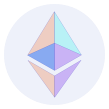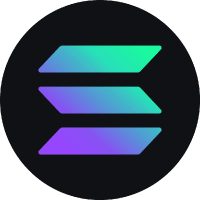Bitget: Ranked top 4 in global daily trading volume!
BTC dominance59.84%
New listings on Bitget: Blum
Hot BTC ETF : IBIT
Bitcoin halving: 4th in 2024, 5th in 2028
BTC/USDT$121728.00 (+2.87%)Fear and Greed Index70(Greed)
Altcoin season index:0(Bitcoin season)
Total spot Bitcoin ETF netflow +$403.9M (1D); -$673.9M (7D).Welcome gift package for new users worth 6200 USDT.Claim now
Trade anytime, anywhere with the Bitget app.Download now
Bitget: Ranked top 4 in global daily trading volume!
BTC dominance59.84%
New listings on Bitget: Blum
Hot BTC ETF : IBIT
Bitcoin halving: 4th in 2024, 5th in 2028
BTC/USDT$121728.00 (+2.87%)Fear and Greed Index70(Greed)
Altcoin season index:0(Bitcoin season)
Total spot Bitcoin ETF netflow +$403.9M (1D); -$673.9M (7D).Welcome gift package for new users worth 6200 USDT.Claim now
Trade anytime, anywhere with the Bitget app.Download now
Bitget: Ranked top 4 in global daily trading volume!
BTC dominance59.84%
New listings on Bitget: Blum
Hot BTC ETF : IBIT
Bitcoin halving: 4th in 2024, 5th in 2028
BTC/USDT$121728.00 (+2.87%)Fear and Greed Index70(Greed)
Altcoin season index:0(Bitcoin season)
Total spot Bitcoin ETF netflow +$403.9M (1D); -$673.9M (7D).Welcome gift package for new users worth 6200 USDT.Claim now
Trade anytime, anywhere with the Bitget app.Download now
What is Polygon Blockchain: Revolutionizing Scalability
Delve into the dynamic realm of the Polygon blockchain, which boldly redefines scalability and interoperability within the Ethereum ecosystem.
2025-04-27 00:35:00

Article rating
4.3
114 ratings
Polygon price now: $0.00
Buy now!
A welcome pack worth 6200 USDT for new users!
Sign up now!
What is Polygon Blockchain
Ever wondered what stands at the intersection of cutting-edge technology and the promises of decentralization? Let's embark on a journey to unravel the nuances of the Polygon blockchain, the platform that's sparking new conversations and innovations in the crypto and blockchain space.
## The Genesis of Polygon
Polygon, formerly known as Matic Network, emerged from the ambition to solve the thorny challenges of scalability and high transaction costs that plague the Ethereum network. It was launched in 2017, with a dedicated focus on transforming Ethereum into a full-fledged multi-chain system, akin to other prominent networks like Polkadot and Cosmos, but with the inherent security of Ethereum.
### A Closer Look at Scalability Solutions
Ethereum, the pioneering platform for smart contracts and decentralized applications (dApps), is often constrained by its scalability issues and high gas fees, which hinder its potential to accommodate mainstream applications. Enter Polygon—a layer-2 scaling solution designed to mitigate these bottlenecks.
Polygon achieves its scaling prowess through a growing suite of solutions, primarily focusing on sidechains, Plasma chains, zk-Rollups, and Optimistic Rollups. Each of these provides unique advantages and trade-offs, allowing developers to choose tools that best fit their application needs.
#### Sidechains
Sidechains serve as autonomous blockchains that operate alongside the Ethereum mainnet, offering lower transaction fees and faster confirmation times. They are compatible with Ethereum, meaning they can host Ethereum-compatible smart contracts, which greatly eases development.
#### Plasma Chains
Plasma is a framework proposed to increase the computational potential of Ethereum, enabling high throughput without sacrificing security. Essentially, Plasma creates child chains that bundle transactions into a single data set to be submitted to the Ethereum mainnet, optimizing computational efficiency.
#### zk-Rollups
zk-Rollups bundle hundreds of transfers into a single transaction. Through Zero-Knowledge Proofs, correctness is verified off-chain, reducing the need for heavy on-chain computation and enabling quick transaction finality.
#### Optimistic Rollups
Optimistic Rollups, on the other hand, assume transactions are valid by default (hence 'optimistic') and apply fraud-proofs to detect and correct faults. While zk-Rollups offer better data compression, Optimistic Rollups are gaining traction for their simplicity and compatibility with the Ethereum Virtual Machine (EVM).
## Unlocking Interoperability
Polygon isn’t just about scaling—it’s about interoperability, bringing various blockchain systems to work seamlessly. This capability is essential in a decentralized future where multiple blockchains can interact in a seamless, trust-free manner.
Through its architecture, Polygon establishes bridges to transfer arbitrary messages across platforms, not just tokens, pushing the potential of inter-chain communication far beyond current boundaries. It allows developers greater flexibility to build interconnected ecosystems without being tied to a single-chain paradigm.
## Polygon’s Ecosystem and Adoption
The Polygon ecosystem is rapidly expanding, with thousands of dApps launching on its platform, capitalizing on its lower costs and enhanced efficiencies. DeFi projects, NFT marketplaces, and gaming applications, among others, are flocking to the Polygon network.
This growth is coupled with notable partnerships across the industry, ensuring that Polygon maintains a robust and widely adopted platform. Moreover, integrations with major wallets like Bitget Wallet offer users seamless interaction with the blockchain, making entry and management accessible and secure.
## Staking and Security
A key piece of Polygon's architecture is its Proof-of-Stake consensus mechanism, which secures the network through validators. Users can stake their MATIC tokens, Polygon’s native cryptocurrency, to participate in or delegate staking procedures. This not only secures the network but also offers incentives to stakeholders, ensuring an equitable and participative ecosystem.
Overall, Polygon thrives on its community-centric model, engaging participants and developers actively while iterating on its technology to remain in the vanguard of blockchain evolution.
## Embracing a Multichain World
The future is multichain, and Polygon positions itself as a key player in the realization of this vision. By addressing the endemic issues within the blockchain ecosystem—namely scalability and interoperability—Polygon continues to foster innovation and broaden the horizons for decentralized technologies.
For those poised on the edge of blockchain technology, understanding and leveraging what Polygon brings to the table is essential. Whether you are a developer looking to deploy the next killer dApp, an enterprise seeking robust blockchain solutions, or a casual user intrigued by the potential of decentralized finance, the promise of Polygon is profound and transformative.
Stepping into the world of Polygon means entering an ecosystem designed for resilience, inclusivity, and unbounded possibility. Discover how Polygon is not only redefining infrastructure but also democratizing access to blockchain’s full potential.
The content above has been sourced from the internet and generated using AI. For high-quality content, please visit Bitget Academy.
Want to get cryptocurrency instantly?
Create a Bitget account to buy and sell cryptocurrencies instantly.Download the Bitget app to trade cryptocurrencies anytime, anywhere.You can purchase popular currencies directly with your credit card.You can trade various currencies in the spot market.You can cash out in the fiat currency market.You can trade popular on-chain tokens (including memecoins) with Bitget Wallet.You can check out the tutorial on how to buy cryptocurrency.You can view all cryptocurrency prices today.You can check how much you will earn if you buy cryptocurrencies.You can explore cryptocurrency price predictions from this year to 2050.Sign up now!Download the Bitget app
Buy crypto for $10
Buy now!Related articles
How to Go to Reset Blockchain and Transactions
2024-06-30 03:01:00
Why IBM Believes Quantum Computing is the Next Big Cloud Hit After AI and Blockchain
2024-07-22 02:03:00
How to Program a Blockchain Explorer with Python and Bitcoin
2024-07-25 12:05:00
How to Build a Blockchain Network with Hyperledger Fabric and Composer
2024-07-28 06:12:00
Why Smart Contracts are Stored and Executed in a Blockchain
2024-07-09 07:37:00
Difference Between Encryption and Hashing in Blockchain
2024-07-18 07:02:00
Establishing Relationship Between Digital Blockchain and Physical Assets
2024-07-22 03:38:00
What is Blockchain: A Comprehensive Guide
2024-08-08 05:44:00
Viable Projects and Apps on Blockchain
2024-07-12 11:35:00
Understanding the Difference Between Blockchain and Ecommerce
2024-07-20 10:47:00
Latest articles
See moreRaspberry Pi Network Hat in Blockchain Applications
2025-08-11 03:29:00
Unable to Sync with Pi Network: Troubleshooting Guide
2025-08-11 03:28:00
Remote Access Raspberry Pi Outside Network: Crypto Security Guide
2025-08-11 03:27:00
Pi Network Data Breach: What You Need to Know
2025-08-11 03:26:00
Aave AMM UNI WBTC USDC: Crypto Synergy Explained
2025-08-11 03:26:00
Can I Exchange Pi Coin For Cash? Guide & Realities
2025-08-11 03:25:00
USDC ETH to Solana: A Complete Transfer Guide
2025-08-11 03:23:00
Can I Sell Pi Coin in US? Full Guide
2025-08-11 03:22:00
How Many Pi Coins Do I Have: A User Guide
2025-08-11 03:19:00
Pi Coin to Mainnet: Process, Timeline, and Impact
2025-08-11 03:19:00
About author
Emma Shah
I'm Emma Shah, a blockchain culture interpreter bridging English and Hindi. I can deeply analyze Polygon's scaling solutions and the economic models of on-chain games in English, while discussing the impact of India's cryptocurrency tax policies and grassroots innovations in Mumbai's blockchain communities in Hindi. Having worked on a decentralized storage project in Bangalore and studied the application of NFTs in art copyright in London, I'll guide you through the blockchain world where global and local perspectives intersect, uncovering diverse stories behind the technology.

MATIC
Polygon price now
$0.00
(+2.78%)24h
The live price of Polygon today is $0.00 USD with a 24-hour trading volume of $1.27M USD. We update our MATIC to USD price in real-time. MATIC is 2.78% in the last 24 hours.
Buy Polygon nowHow to buy cryptocurrencies
Trending assets
Assets with the largest change in unique page views on the Bitget website over the past 24 hours.























